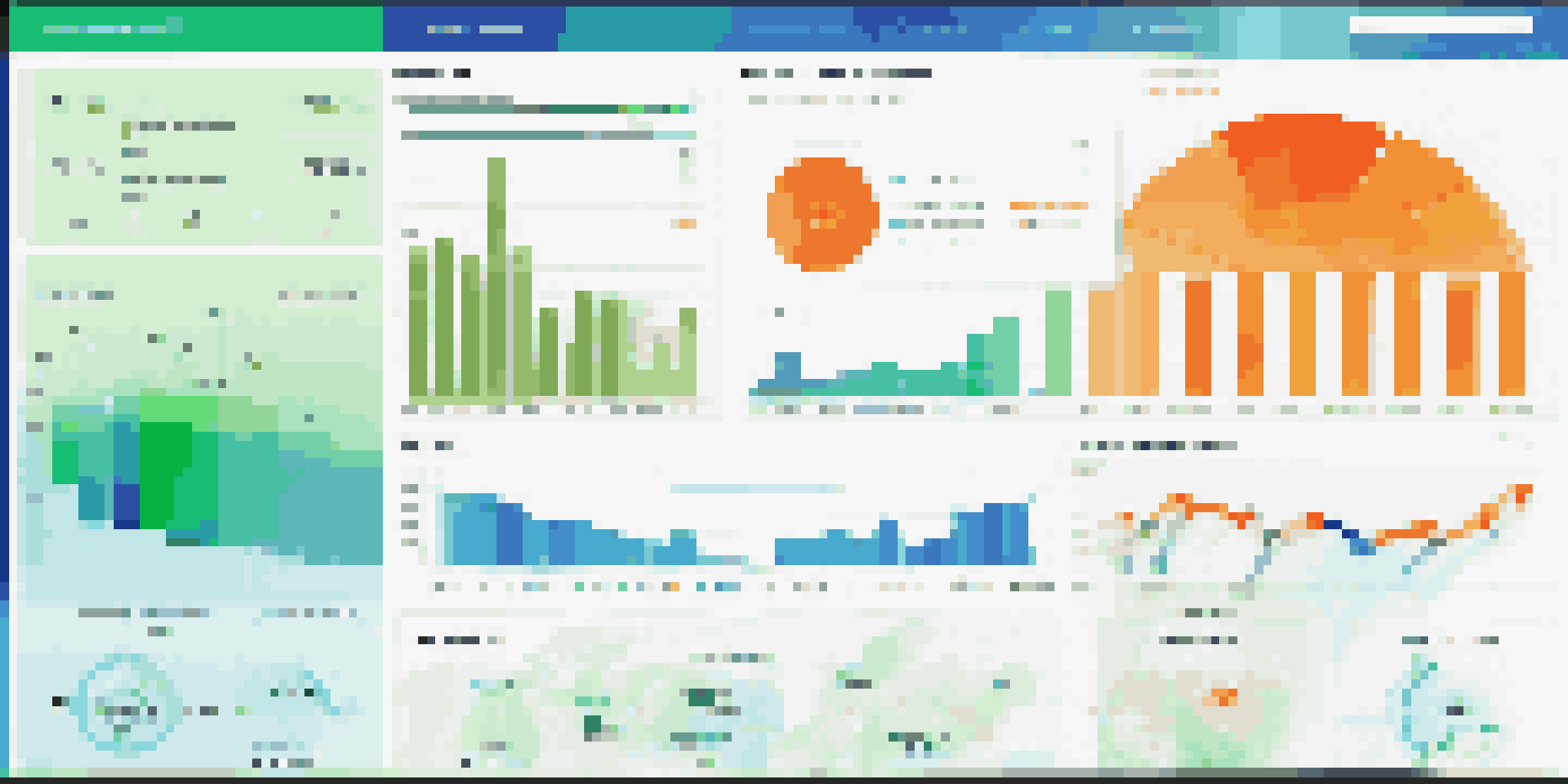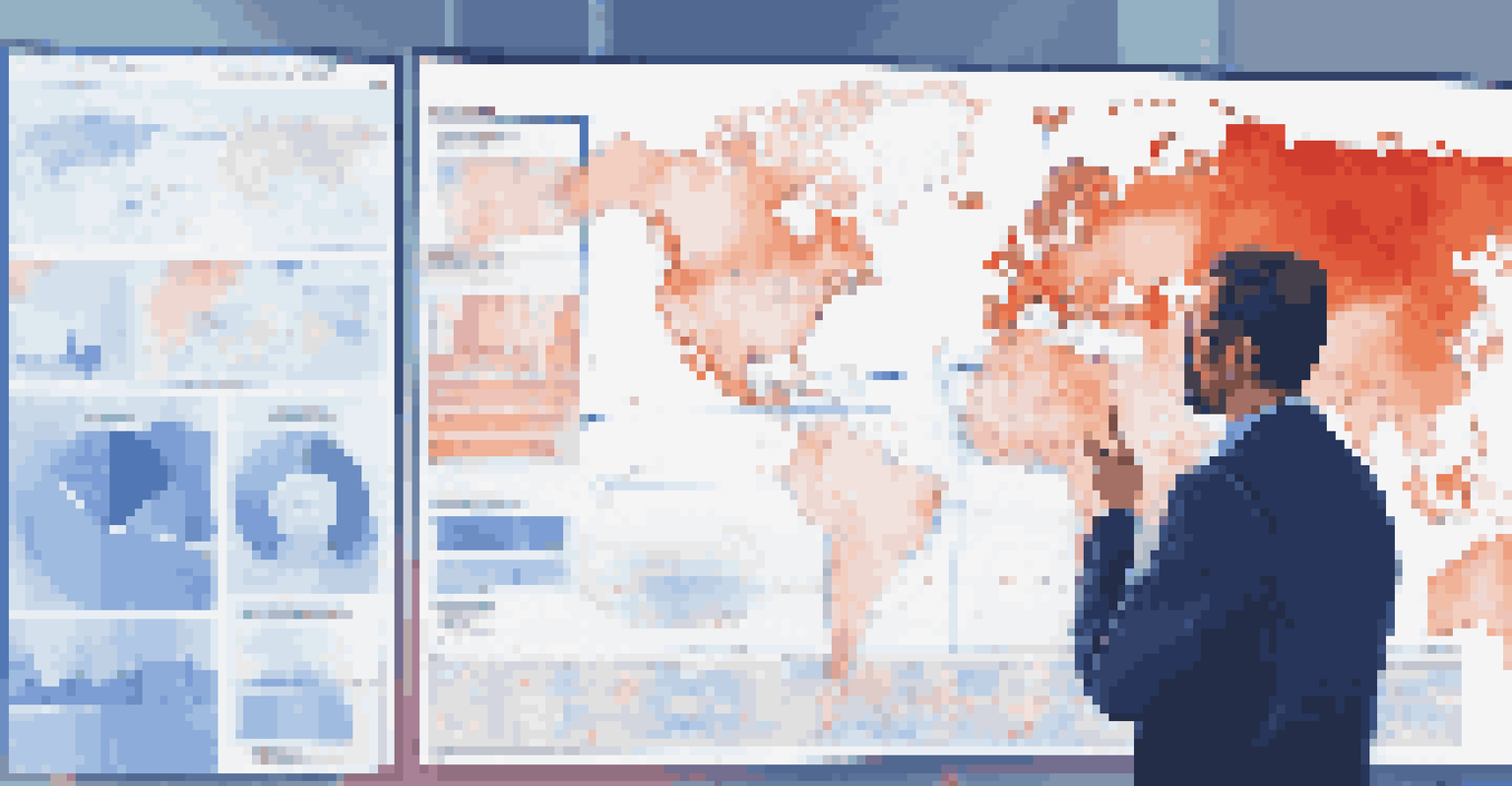The Power of Visualization in Supply Chain Management

Understanding Visualization in Supply Chain Management
Visualization in supply chain management refers to the use of graphical tools to represent data and processes. By turning complex information into visual formats, such as charts or maps, stakeholders can easily grasp intricate relationships and patterns. This clarity is essential in making informed decisions and optimizing operations.
Data visualization is not just about making data pretty; it's about making data accessible and understandable.
For example, a logistics manager might use a heat map to visualize shipment routes, identifying areas with delays or inefficiencies. Such visuals not only highlight problem areas but also help teams brainstorm solutions collaboratively. Ultimately, visualization serves as a bridge between data and actionable insights.
Moreover, effective visualization fosters communication among team members and across departments. When everyone can see the same data presented visually, it reduces misunderstandings and aligns objectives. This shared understanding is crucial for a coordinated approach to supply chain challenges.
Benefits of Visualization in Supply Chain Processes
One of the primary benefits of visualization is improved decision-making. When data is displayed visually, it becomes easier to analyze trends, forecast demand, and allocate resources effectively. This capability helps companies respond quickly to changes in the market, enhancing their competitive edge.

Additionally, visual tools can significantly reduce the time spent on data interpretation. Instead of poring over spreadsheets, managers can glance at a dashboard and immediately identify key metrics. This efficiency allows teams to focus more on strategy and less on deciphering numbers.
Visualization Enhances Decision-Making
Visualizing data simplifies analysis, enabling teams to make informed decisions quickly.
Another advantage is greater risk management. By visualizing potential disruptions in the supply chain, such as supplier delays or inventory shortages, organizations can proactively develop contingency plans. This foresight ultimately leads to a more resilient supply chain.
Key Visualization Tools for Supply Chain Management
There are numerous visualization tools available that cater specifically to supply chain needs. Software like Tableau and Power BI offers robust features for creating interactive dashboards that track performance metrics in real-time. These platforms allow users to drill down into the data for deeper insights.
Without data, you're just another person with an opinion.
Another popular tool is Geographic Information Systems (GIS), which helps map out logistics routes and visualize geographic factors that impact delivery. For example, GIS can highlight areas prone to traffic congestion, enabling better route planning. This strategic use of maps can significantly enhance operational efficiency.
Moreover, many organizations are adopting 3D visualization technologies to simulate supply chain scenarios. This innovation allows teams to visualize the entire process from procurement to delivery, helping identify bottlenecks and optimizing workflows. These advanced tools can transform how businesses approach supply chain challenges.
Implementing Visualization Strategies Effectively
To implement visualization strategies effectively, organizations must first identify their key performance indicators (KPIs). Understanding what metrics are most important allows teams to focus their visualization efforts on the data that truly matters. This targeted approach increases the relevance and impact of the visuals created.
Next, it's essential to choose the right tools that align with the team's skill set and the organization's goals. Training employees on these tools can significantly boost their effectiveness, ensuring that everyone is equipped to leverage visualization in their daily tasks. This investment in skills pays off in improved performance.
Effective Tools Drive Supply Chain Success
Utilizing advanced visualization tools like dashboards and GIS improves operational efficiency and resource allocation.
Lastly, continuous feedback is vital in refining visualization efforts. Engaging team members in discussions about what works and what doesn’t can lead to more effective visuals over time. This iterative process ensures that the visualization strategies evolve along with the supply chain dynamics.
Challenges in Adopting Visualization Techniques
While the benefits of visualization are clear, some challenges can arise during implementation. One of the most significant hurdles is data quality. If the underlying data is inaccurate or incomplete, the visuals will mislead rather than inform. Therefore, organizations must prioritize data governance before diving into visualization.
Another challenge is resistance to change. Employees accustomed to traditional data analysis methods may be hesitant to adopt new visualization tools. To combat this, it's essential to communicate the advantages clearly and provide comprehensive training that demonstrates the value of these new techniques.
Additionally, there’s the risk of information overload. With so many data points available, it can be tempting to include everything in a visual. However, this approach can overwhelm viewers and obscure key insights. Striking the right balance between detail and clarity is crucial for effective visualization.
Real-World Examples of Visualization Success
Many companies have successfully harnessed visualization to enhance their supply chain processes. For instance, a major retailer implemented a real-time dashboard that visualizes inventory levels across multiple warehouses. This tool enabled them to reduce stockouts and improve customer satisfaction by ensuring popular items were always available.
Another example can be seen in the automotive industry, where manufacturers utilize simulation software to visualize production processes. By creating a virtual model of the assembly line, they can identify inefficiencies and optimize workflows, significantly reducing production time and costs.
Future Innovations in Visualization
Emerging technologies like AI and AR are set to revolutionize supply chain visualization, enhancing predictive capabilities and real-time interactions.
These success stories illustrate that when visualization techniques are properly applied, they can lead to substantial improvements in efficiency and responsiveness. The key takeaway is that visualization is not just a trend; it's a powerful strategy that can drive tangible results in supply chain management.
The Future of Visualization in Supply Chain Management
As technology continues to advance, the future of visualization in supply chain management looks promising. Emerging technologies like artificial intelligence (AI) and machine learning (ML) are enhancing visualization capabilities, allowing for predictive analytics and more sophisticated data interpretations. This evolution will empower organizations to anticipate challenges before they arise.
Moreover, the integration of augmented reality (AR) in supply chain visualization is on the horizon. Imagine warehouse workers using AR glasses to visualize inventory locations or assembly line setups in real-time. Such innovations could revolutionize how teams interact with data and streamline operations even further.

Ultimately, the ongoing development of visualization tools will enable supply chain professionals to make smarter, faster decisions. As businesses embrace these advancements, they will likely see enhanced efficiency, reduced costs, and improved overall performance in their supply chains.